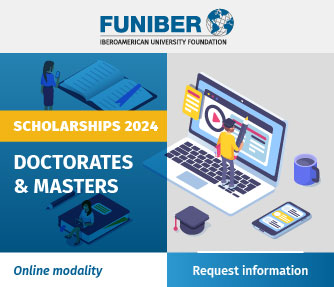MLS Communication Journal
ISSN: 2792-9280
Welcome to the MLS Communication Journal! This scientific publication aims to create a space for discussion and debate, based on a collection of articles derived from projects and research addressing the field of communication from different perspectives and approaches as its main area of study.
We encourage you to submit your work on the different disciplinary fields of communication and their respective areas of confluence and mixture: journalism, advertising, audiovisual communication, interactive communication, or communication within organizations, among others. The journal specifically focuses on the publication of academic and scientific papers that identify, describe, and disseminate unpublished and interesting findings in these fields, from the theoretical review, methodological innovation, experimentation, and the commitment to innovation.
Latest articles
Accepted articles
Media and information literacy has become one of the most urgent challenges of contemporary society. Therefore, this article allows us to explore the conditions of access to technologies and media literacy in adults aged 65 and older in Ecuador and Bolivia. In the same way, it leads us to establish how these aspects influence the living conditions of the members of this generational group. This article was developed within the framework of the research project “Media and informational competence: a focus on older adults in the Andean Community” authored by Eduardo Loaiza Lima, doctoral student of the Interuniversity Doctorate in Communication, which is directed by doctors Ángel Hernando and Antonio García. In this context, we have used a quantitative methodology and applied surveys in an assisted manner in cities such as La Paz (Bolivia), Quito, Machala and Loja in Ecuador, to older adults aged 65 years and older, the same ones who belong to the social care and retired people were also approached, mainly from the educational sector. Among the most relevant findings, it was determined that the number of adults who access technologies has increased in recent years and, consequently, these have improved their living conditions, considering that media and information literacy is a determining factor in accessing information quality information.
Indigenous languages in the infographics of mexican government agencies and educational institutions
The current administration has implemented a communication strategy that involves infographics as a visual support - analog and digital - for the dissemination and prevention by and for the indigenous peoples of Mexico. The advantages of this communicative element have been recognized. characterize infographics in indigenous languages to convey messages as part of the Social Communication of Mexican government agencies and educational institutions. A quantitative, descriptive, longitudinal, and non-experimental research design was used. The sample comprised 82 infographics published by the Government of Mexico, state governments, and some educational institutions on social networks and official websites. The infographics from the last two years of the current administration were analyzed. Content analysis was implemented, and a digital observation guide, consisting of 20 items, was built for information retrieval and used as a research instrument. It was observed that infographics have been published in the 68 indigenous languages spoken in Mexico. On average, an infographic is translated into at least five indigenous languages, and 45% were translated into the native languages of their respective regions. Additionally, 55% of the infographics focused on SARSCOV-19, making this the most recurring topic. The government and educational organizations must continue using the various Indigenous languages to inform inhabitants who still practice them, especially in formats as accessible to the population as visual aids such as infographics.












